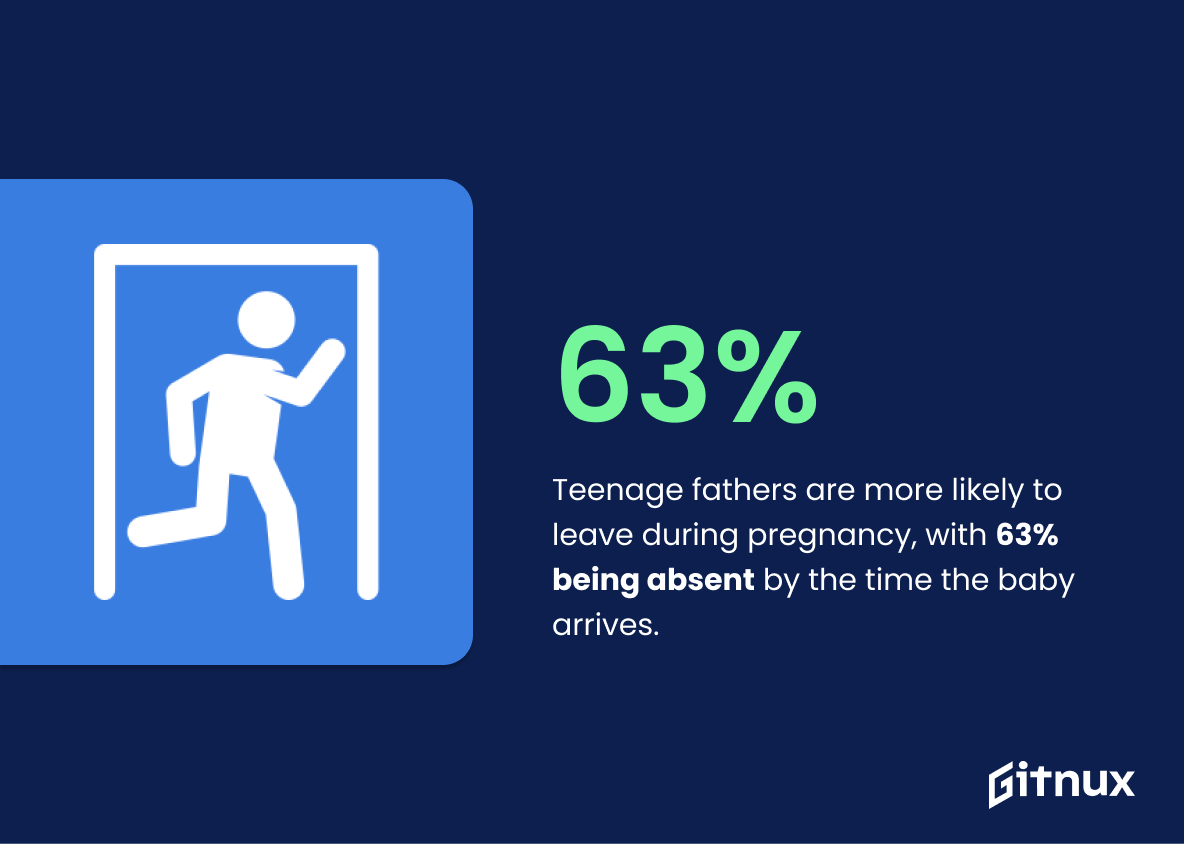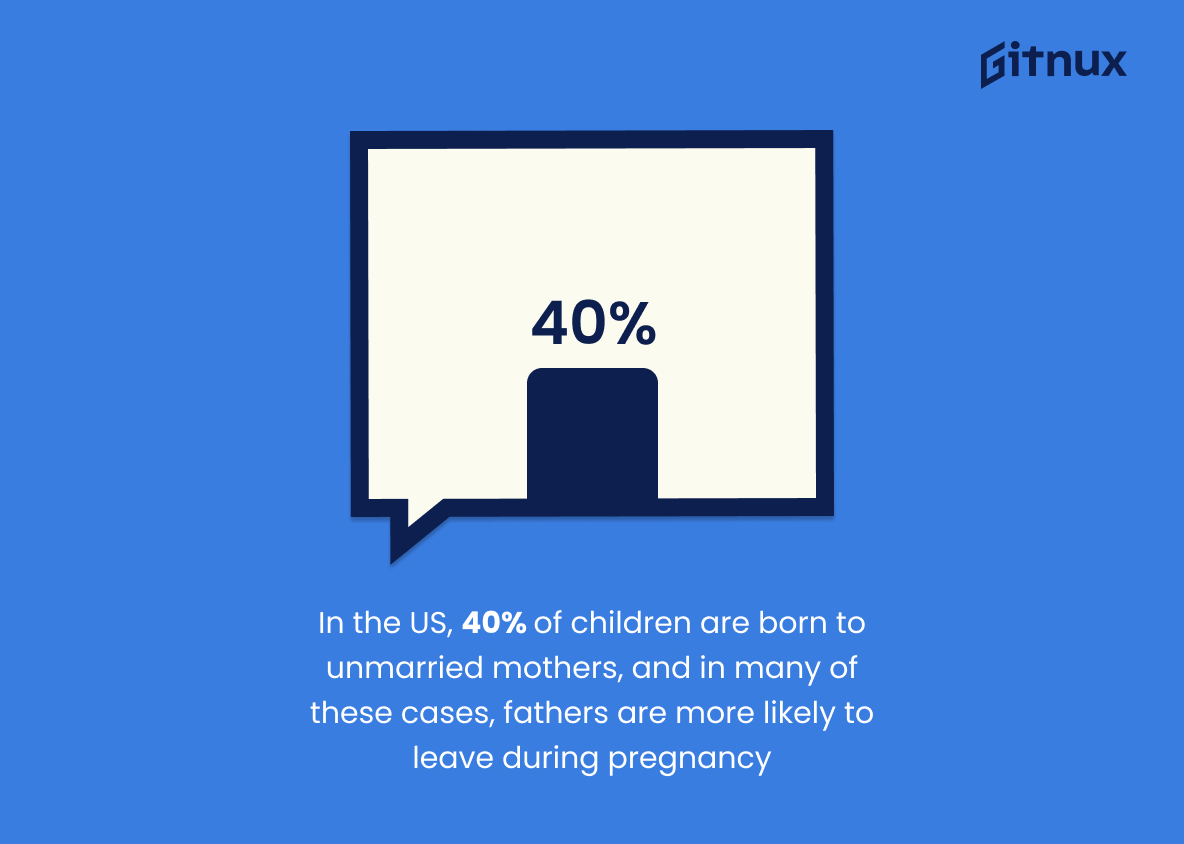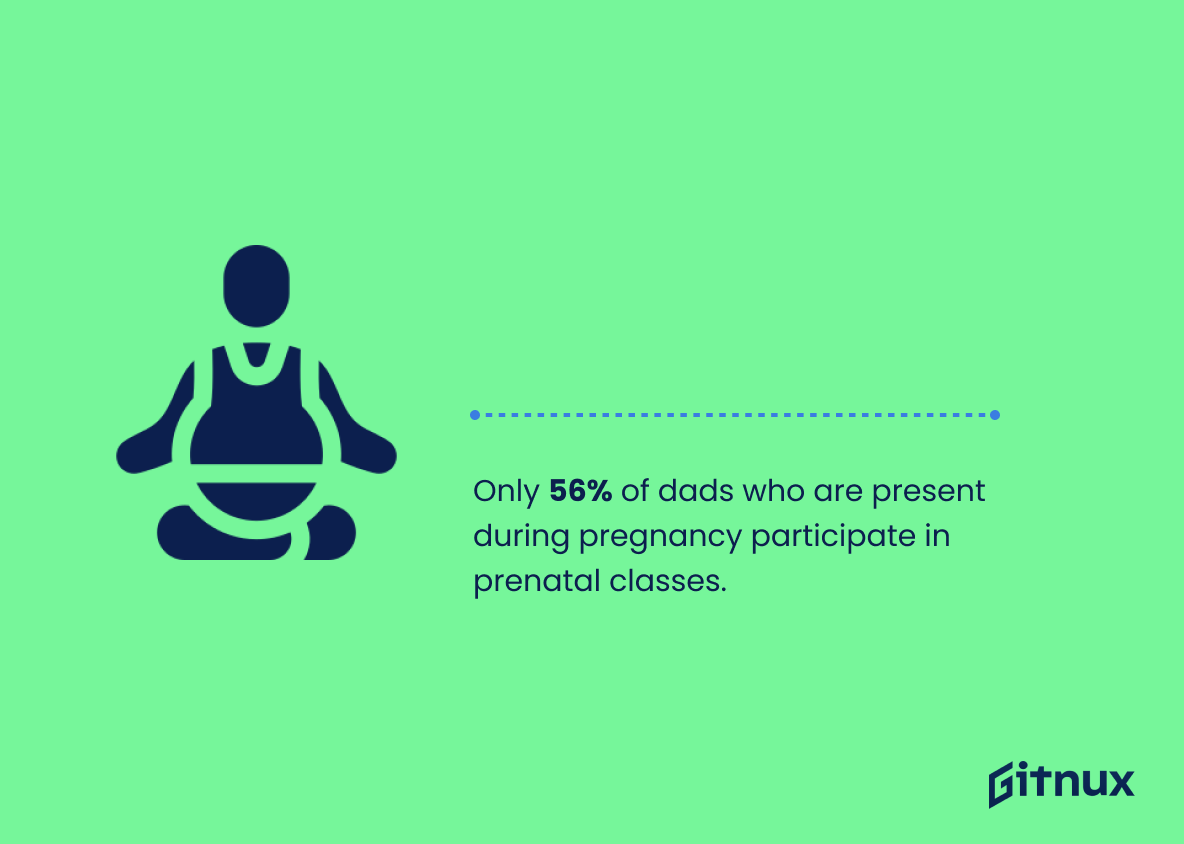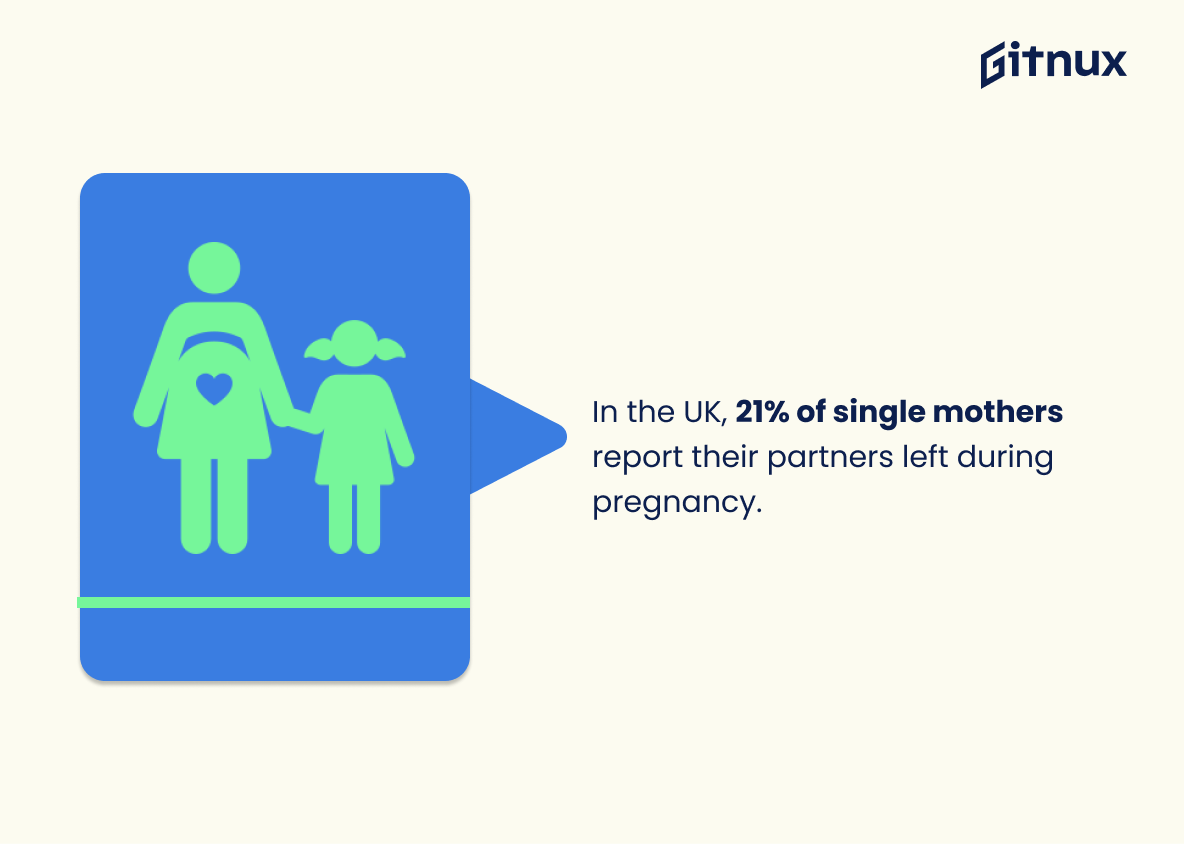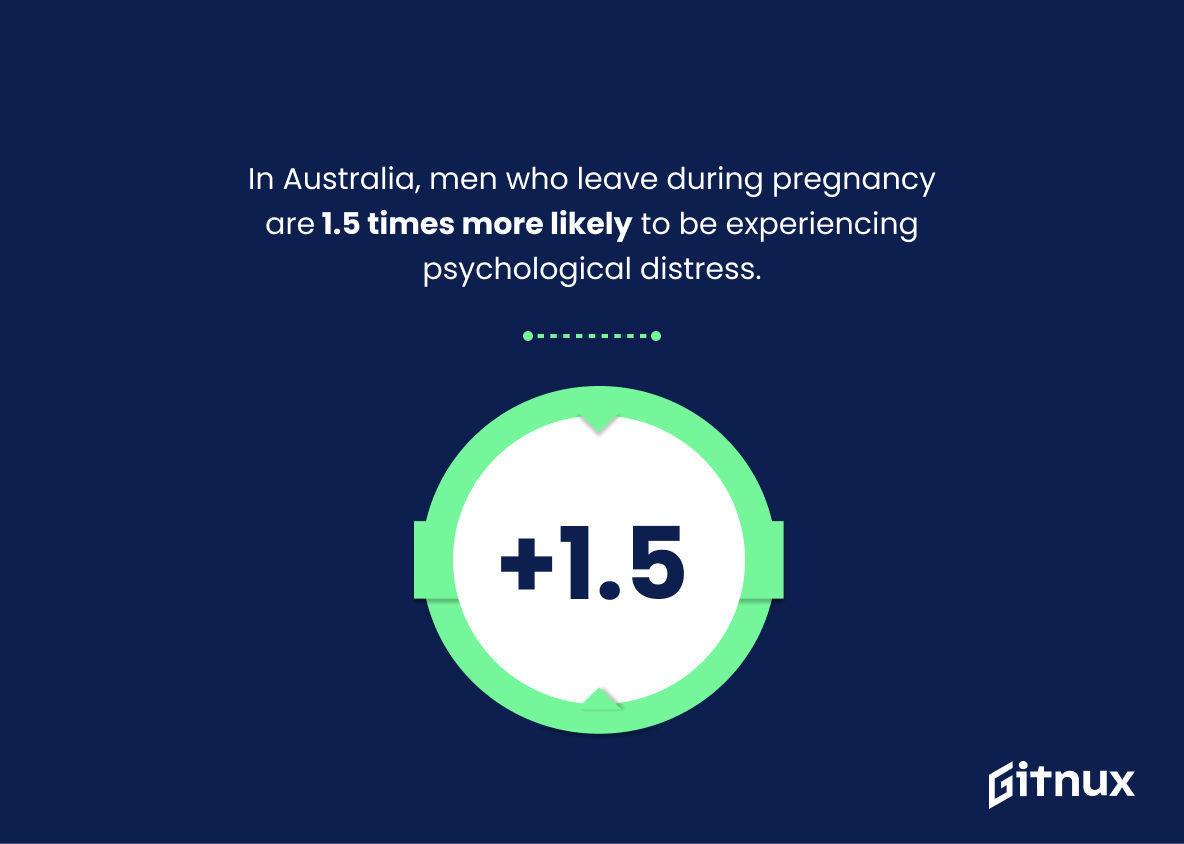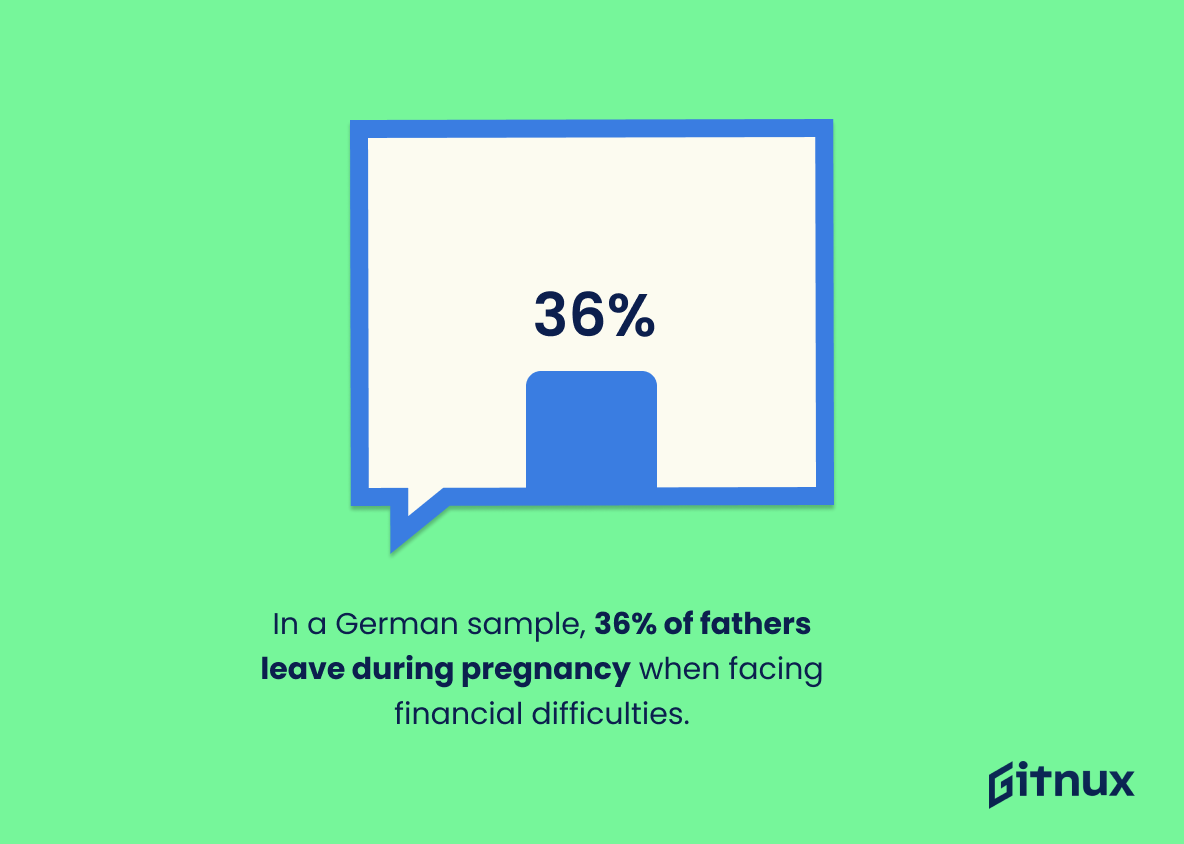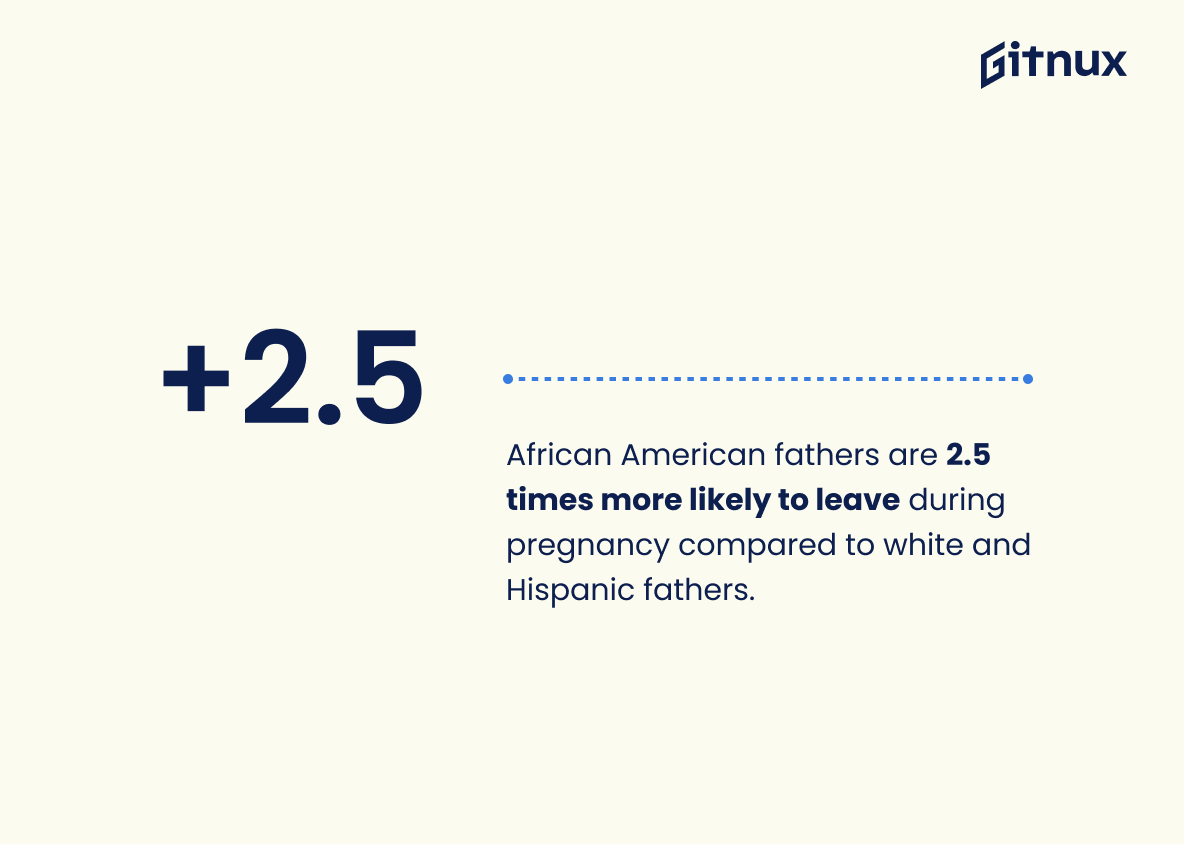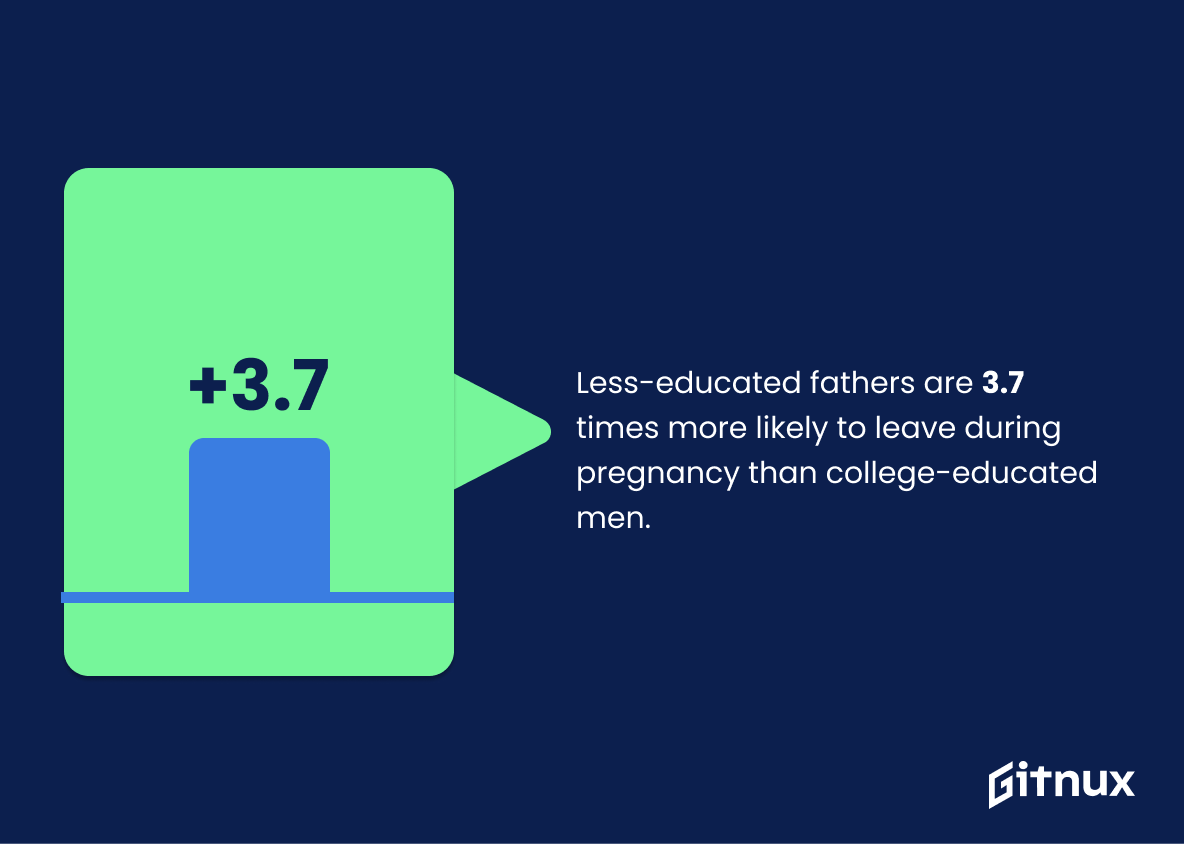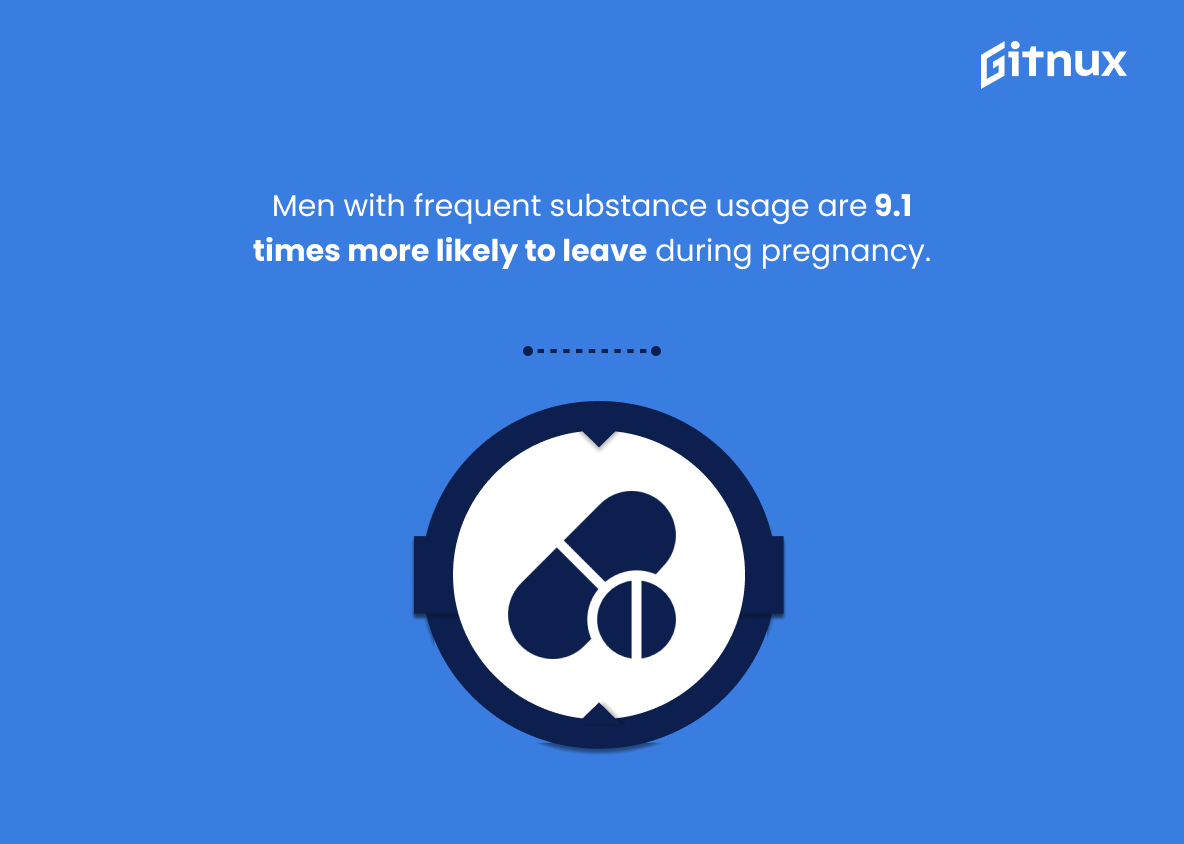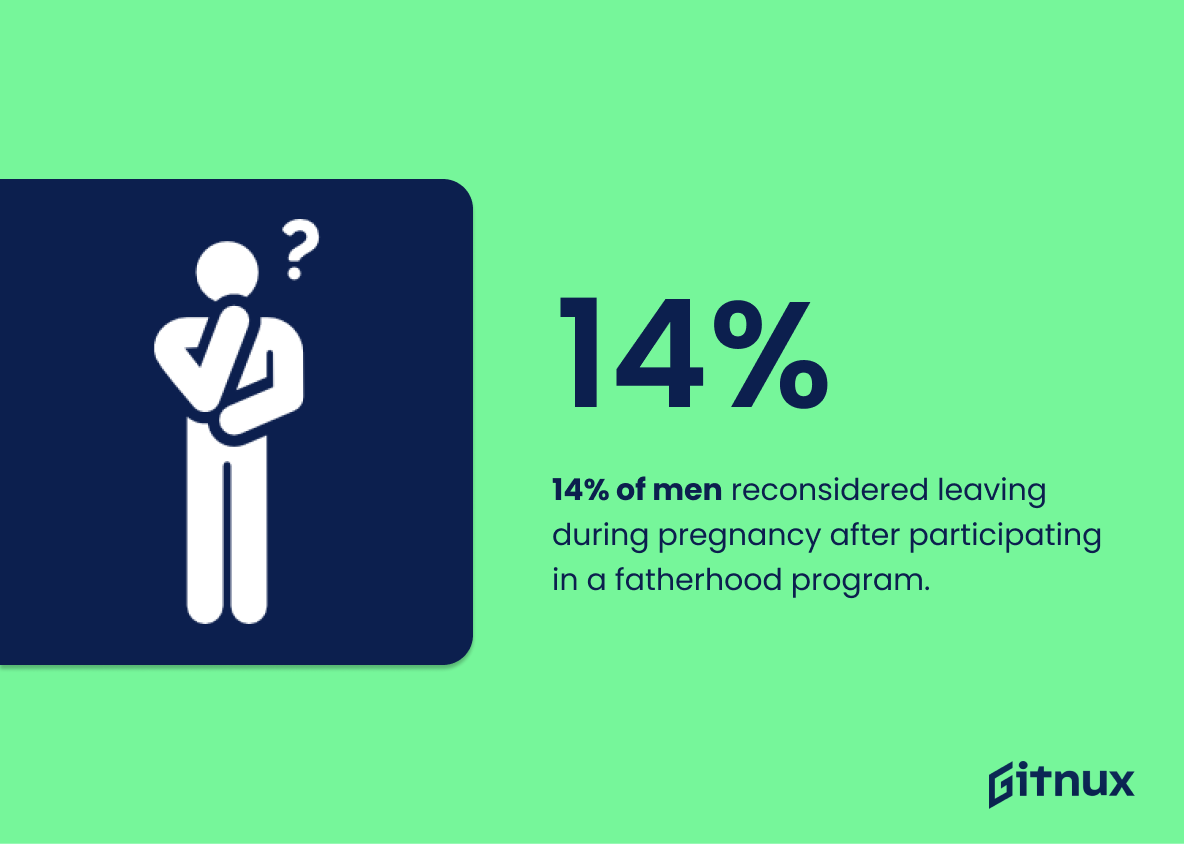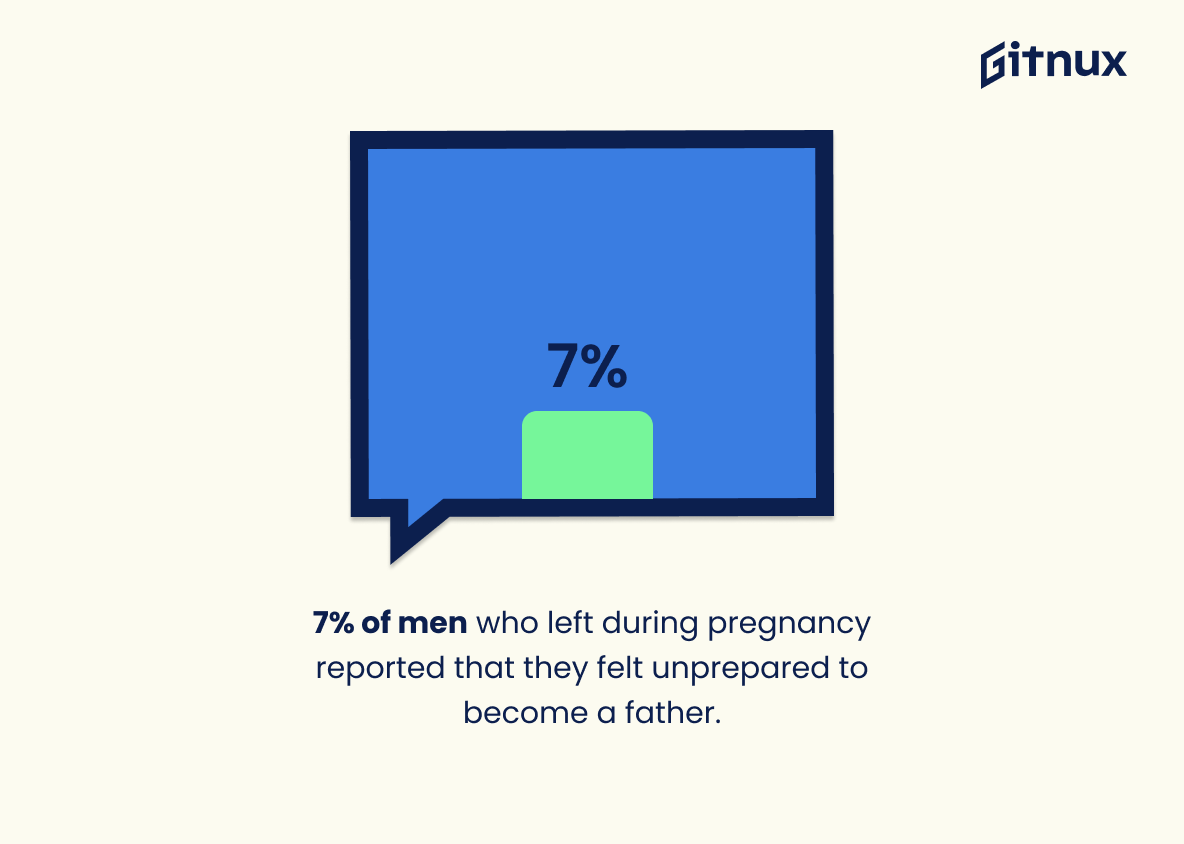Pregnancy is a time of great joy and anticipation for many couples, but it can also be a difficult period. Unfortunately, statistics show that men leaving during pregnancy is an all too common occurrence. This blog post will explore the various statistics related to this issue in order to gain insight into why fathers may leave during pregnancy and what can be done about it.
Man Leaving During Pregnancy Statistics Overview
Teenage fathers are more likely to leave during pregnancy, with 63% being absent by the time the baby arrives.
This statistic is a stark reminder of the reality that many teenage fathers are not present for the birth of their child. It highlights the importance of providing support and resources to teenage fathers to ensure they are present and involved in the pregnancy and birth of their child. It also serves as a reminder of the need to address the underlying issues that lead to teenage fathers leaving during pregnancy.
In the United States, 40% of children are born to unmarried mothers. The number of cases in which fathers leave during pregnancy is likely much higher in such cases.
This statistic is a stark reminder of the prevalence of fathers leaving during pregnancy in the United States. It highlights the fact that a significant portion of children are born to unmarried mothers, and that the number of fathers leaving during pregnancy in such cases is likely much higher than the overall average. This is an important issue to consider when discussing the statistics of men leaving during pregnancy, as it provides a more accurate picture of the situation.
Only 56% of dads who are present during pregnancy participate in prenatal classes.
This statistic is a stark reminder of the fact that many fathers are not present during pregnancy, and of those who are, many are not taking part in prenatal classes. This highlights the need for more support and education for fathers during pregnancy, to ensure that they are equipped to provide the best possible care for their partner and unborn child.
In the UK, 21% of single mothers report their partners left during pregnancy.
This statistic is a stark reminder of the reality that many single mothers face – that their partners can leave during pregnancy. It highlights the need for support for single mothers, both during and after pregnancy, to ensure that they are able to cope with the challenges of raising a child alone. It also serves as a warning to expectant couples to be aware of the potential for a partner to leave during pregnancy, and to be prepared for the possibility.
In Australia, men who leave during pregnancy are 1.5 times more likely to be experiencing psychological distress.
This statistic is a stark reminder of the psychological toll that men leaving during pregnancy can take. It highlights the need for greater support for men in this situation, as well as the need for more research into the psychological effects of leaving during pregnancy. It also serves as a warning to those considering leaving during pregnancy, that it can have serious psychological consequences.
Approximately 42% of separated or divorced fathers report quitting their job during their partner’s pregnancy.
This statistic is a stark reminder of the reality that many men face when their partner is pregnant. It highlights the fact that, for a significant portion of men, the pressure of impending fatherhood can be overwhelming and lead to them leaving their job. This can have a huge impact on the family, both financially and emotionally, and is an issue that needs to be addressed.
In a German sample, 36% of fathers leave during pregnancy when facing financial difficulties.
This statistic is a stark reminder of the reality that many fathers face when it comes to financial difficulties during pregnancy. It highlights the need for more support and resources for fathers who are struggling to stay with their families during this time. It also serves as a reminder that the financial burden of pregnancy can be a major factor in a father’s decision to leave, and that this is an issue that needs to be addressed.
African American fathers are 2.5 times more likely to leave during pregnancy compared to white and Hispanic fathers.
This statistic is a stark reminder of the systemic racism that African American fathers face when it comes to leaving during pregnancy. It highlights the need for greater awareness and support for African American fathers who are struggling to stay in the lives of their unborn children. It also serves as a call to action for policy makers to address the underlying issues that lead to this disparity.
Less-educated fathers are 3.7 times more likely to leave during pregnancy than college-educated men.
This statistic is a stark reminder of the disparities that exist between men of different educational backgrounds when it comes to staying with their partners during pregnancy. It highlights the need for greater support and resources for less-educated fathers, so that they can be better equipped to handle the challenges of parenthood.
Men with frequent substance usage are 9.1 times more likely to leave during pregnancy.
This statistic is a stark reminder of the reality that men with frequent substance usage are far more likely to abandon their partners during pregnancy. It highlights the need for greater awareness and support for pregnant women who may be at risk of being left by their partners due to substance abuse. It also serves as a warning to those considering entering into a relationship with someone who has a history of substance abuse, as the risk of them leaving during pregnancy is significantly higher.
14% of men who considered leaving during pregnancy changed their minds after attending a fatherhood program.
This statistic is a powerful reminder that fatherhood programs can have a positive impact on men who are considering leaving during pregnancy. It shows that with the right support and guidance, men can be encouraged to stay and be an active part of their child’s life. This statistic is a testament to the importance of providing resources and support to men during this difficult time.
7% of men who left during pregnancy reported that they felt unprepared to become a father.
This statistic is a stark reminder of the need for more education and support for men who are expecting a child. It highlights the fact that many men feel unprepared to take on the role of a father, which can have a significant impact on the health and wellbeing of both the father and the child. It is essential that men are given the resources and guidance they need to become confident and capable fathers.
Conclusion
The statistics presented in this blog post demonstrate that men leaving during pregnancy is a widespread phenomenon. The data shows that the likelihood of fathers leaving increases if they are unmarried, divorced, or teenagers; have lower levels of education and/or substance usage; or experience financial difficulties. Additionally, African American fathers are more likely to leave than white and Hispanic fathers.
Furthermore, 95% of men who left reported major conflicts with their partner as the primary reason for doing so while 7% felt unprepared to become a father. Finally, 14% changed their minds after attending a fatherhood program but only 10% returned within one year of birth and 37% stayed separated through their child’s first year of life.
References
0. – https://www.mdpi.com
1. – https://www.pewresearch.org
2. – https://www.childtrends.org
3. – https://www.ncbi.nlm.nih.gov
4. – https://www.ifstudies.org
5. – https://www.telegraph.co.uk
6. – https://www.researchgate.net
7. – https://www.refinery29.com
8. – https://www.marchofdimes.org
9. – https://www.link.springer.com
